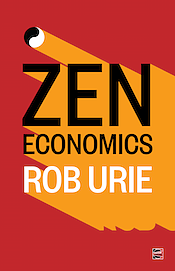
Photo by Garry Knight | CC BY 2.0
There is a curious fallacy that continues to persist among arms control groups rightly concerned with reducing the threat of the use of nuclear weapons. It is that encouraging the use of nuclear energy will achieve this goal.
This illogical notion is enshrined in Article IV of the nuclear Non-Proliferation Treaty (NPT) which rewards signatories who do not yet have nuclear weapons with the “inalienable right” to “develop research, production and use of nuclear energy for peaceful purposes.”
Now comes the international low-enriched uranium bank, which opened on August 29 in Kazakhstan, to expedite this right. It further reinforces the Article IV doctrine— that the spread of nuclear power will diminish the capability and the desire to manufacture nuclear weapons.
The uranium bank will purchase and store low-enriched uranium, fuel for civilian reactors, ostensibly guaranteeing a ready supply in case of market disruptions. But it is also positioned as a response to the Iran conundrum, a country whose uranium enrichment program cast suspicion over whether its real agenda was to continue enriching its uranium supply to weapons-grade level.
The bank will be run by the International Atomic Energy Agency, whose remit is “to accelerate and enlarge the contribution of atomic energy.” Evidently the IAEA has been quite successful in this promotional endeavor since the agency boasts that “dozens of countries today are interested in pursuing nuclear energy.”
A caveat here, borne out by the evidence of nuclear energy’s declining global share of the electricity market, is that far more countries are “interested” than are actually pursuing nuclear energy. The IAEA numbers are more aspiration than reality.
Superficially at least, the bank idea sounds sensible enough. There will be no need to worry that countries considering a nuclear power program might secretly shift to nuclear weapons production. In addition to a proliferation barrier, the bank will serve as a huge cost savings, sparing countries the expense of investing in their own uranium enrichment facilities.
The problem with this premise is that, rather than make the planet safer, it actually adds to the risks we already face. News reports pointed to the bank’s advantages for developing countries. But developing nations would be much better off implementing cheaper, safer renewable energy, far more suited to countries that lack major infrastructure and widespread electrical grid penetration.
Instead, the IAEA will use its uranium bank to provide a financial incentive to poorer countries in good standing with the agency to choose nuclear energy over renewables. For developing countries already struggling with poverty and the effects of climate change, this creates the added risk of a catastrophic nuclear accident, the financial burden of building nuclear power plants in the first place, and of course an unsolved radioactive waste problem.
No country needs nuclear energy. Renewable energy is soaring worldwide, is far cheaper than nuclear, and obviously a whole lot safer. No country has to worry about another’s potential misuse of the sun or wind as a deadly weapon. There is no solar non-proliferation treaty. We should be talking countries out of developing dangerous and expensive nuclear energy, not paving the way for them.
There is zero logic for a country like Saudi Arabia, also mentioned during the uranium bank’s unveiling, to choose nuclear over solar or wind energy. As Senator Markey (D-MA) once unforgettably pointed out: “Saudi Arabia is the Saudi Arabia of solar.” But the uranium bank could be just the carrot that sunny country needs to abandon renewables in favor of uranium.
This is precisely the problem with the NPT Article IV. Why “reward” non-nuclear weapons countries with dangerous nuclear energy? If they really need electricity, and the UN wants to be helpful, why not support a major investment in renewables? It all goes back to the Bomb, of course, and the Gordian knot of nuclear power and nuclear weapons that the uranium bank just pulled even tighter.
Will the uranium bank be too big to fail? Or will it even be big at all? With nuclear energy in steep decline worldwide, unable to compete with renewables and natural gas; and with major nuclear corporations, including Areva and Westinghouse, going bankrupt, will there even be enough customers?
Clothed in wooly non-proliferation rhetoric, the uranium bank is nothing more than a lupine marketing enterprise to support a struggling nuclear industry desperate to remain relevant as more and more plants close and new construction plans are canceled. The IAEA and its uranium bank just made its prospects a whole lot brighter and a safer future for our planet a whole lot dimmer.











